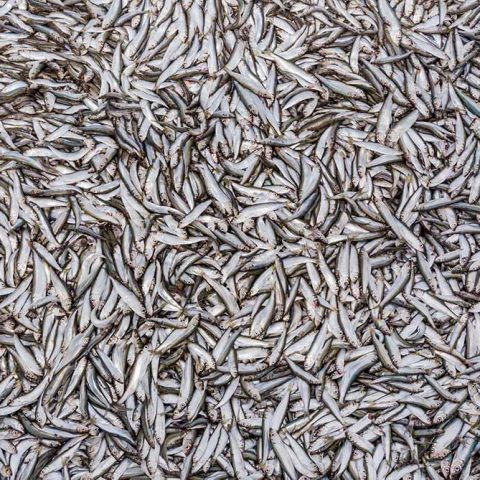Lohen poisheittokiellon poikkeuksen jatkumisesta Itämerellä
Lohia vahingoittuu paljon aiempaa luultua enemmän kalanpyydyksissä uuden ruotsalaistutkimuksen mukaan. Siksi SLL kumppaneineen suhtautuvat kriittisesti lohen poisheittokiellon poikkeuksen jatkumiseen Itämerellä. Asia on esillä EU:n sidosryhmien Baltic Sea Advisory Councilissa.

22.4.2020
Baltic Sea Advisory Council
Statement concerning exemption from the landing obligation for salmon caught in trap nets in the Baltic (CCB, Fisheries Secretariat, FANC, EEA, WWF)
The OIG group [= other interest group eli muut kuin ammattikalastajajärjestöt] consider that the proposed derogation from the landing obligation as regards salmon in the Baltic Sea caught in pontoon trap-nets, including those with a knot-less net bag modification (vittjanpåse) should not be granted or extended.
Detailed position
The proposed draft joint recommendation extends the current exemption from the landing obligation for salmon to also include those salmon caught in pontoon trap-nets (including pontoon trap-nets modified with a knot-less bag). As supporting evidence, a study carried out by the Swedish University of Agricultural Sciences (Östergren et al. 2020)1 has been provided. However, this study shows that the mortality for salmon released from these gears is on average 48%.
The researchers state “at present, salmon in the Baltic Sea suffer from poor health, and there is evidence from recent studies that capture and handling alone is associated with an elevated risk for mortality or behavioural disturbances. Accordingly, and in line with the precautionary approach, a careful use of capture and release as a management measure appears warranted, at least until more information is available.” (page 14). “A careful use” in fisheries management must mean avoiding using pontoon trap-nets in their current design. A documented average discard mortality of 48% must immediately exclude this gear from an exemption to the landing obligation.
Pontoon trap-nets are used to catch migratory salmon and coastal stretches and river estuaries have hundreds of gears successively placed in the path of salmon. Previous studies (Siira et al, 2006) have shown that salmon can be caught multiple times during migration in commercial gears. There is therefore a clear risk of cumulative mortality above the 48% average mortality as stated in Östergren et al 2020. The clear risk of cumulative mortality must surely negate the usage of pontoon trap nets as selective gears with low mortality.
We emphasise that pontoon trap-nets should only be used for what they are currently designed for, as very efficient, seal safe and ergonomic gears for salmon fishing. When the salmon quota is caught then pontoon trap-nets including push up traps modified with vittjanpåse should not continue to be used as a selective gear.
Further, we underline that the derogation given since 2015 (later repeated) for high survival rate of released salmons in the trap net fishery is highly questionable. The basis for the decision is not in line with the requirements in the CFP2. The original scientific support used as basis for derogation (stating 7-11% mortality) is based upon an earlier study published in 2006 (Siira et al 2006), using gears that are rarely utilized for salmon fishing. These gears were not seal safe and resulted in safety issues for fishermen. Trap nets of pontoon type as used in Östergren et al. are now utilized within the salmon fishery. The increased mortality of released fish in pontoon trap nets is due to increased handling and time in air of released fish.
Exemptions for high survival
Article 15 paragraph 4b) of the Basic regulation does allow for the possibility of exemptions from the landing obligation for species for which ”scientific evidence demonstrates high survival rates, taking into account the characteristics of the gear, of the fishing practices and of the ecosystem”. However, the CFP does not provide any guidance on what “high survival rate” is.
Instead the EU Commission has put the question to an Expert Working Group (EWG) of the Scientific, Technical and Economic Committee for Fisheries (STECF) that state:
The selection of a value for “high survival” is subjective and likely to be species- and fishery-specific and STECF noted:
- The avoidance of unwanted catch should be the primary aim
- The potential for changing the catch pattern to avoid unwanted catches should be understood
- The value will be based on “trade-offs”:
- The impact on the stock of the landing obligation vs. exemption under the high survival provision (e.g. MSY)? should be well understood
If any further derogation should, against reason, be granted then this must be time limited and further relevant study must accompany such a derogation. We have not yet seen any new proposals to address the above key issue and instead only a business as usual scenario has played out since 2015, disregarding to change the fishery, gears etc. The actual numbers of survival, less than 5 of 10 salmon (48%) cannot be said to be high survival.
1 J. Östergren, C. Blomqvist, J. Dannewitz, S. Palm, A. Fjälling, SLU Aqua 2020, “Discard mortality of salmon caught in different gears”
2 The possibility to consider exemptions from the landing obligation based on high survival is given in CFP basic Regulation Article 15.4b (as well as in Article 7 of the Baltic Multiannual management plan for cod, sprat and herring, Reg. (EU) 2016/1139)
Lisätietoja

Toiminnanjohtaja Tapani Veistola
- +358 400 615 530
- tapani.veistola(a)sll.fi

